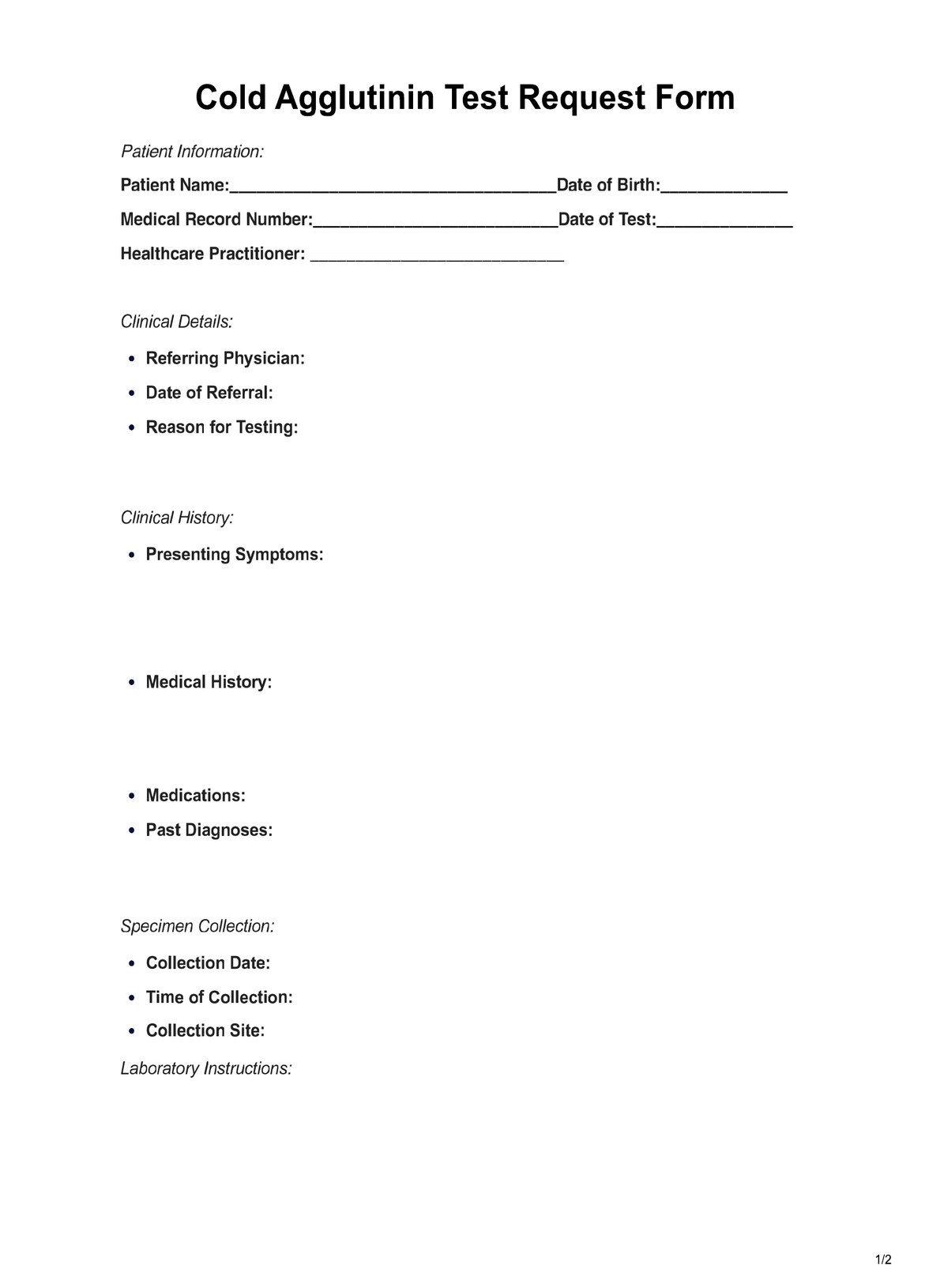Cold agglutinins can be associated with autoimmune disorders (e.g., rheumatoid arthritis), infections (e.g., Mycoplasma pneumoniae), or lymphoproliferative disorders.

Cold Agglutinin
Learn about the Cold Agglutinin Test for diagnosing autoimmune conditions. Understand its role in healthcare alongside Cold Caloric Test.
Use Template
Cold Agglutinin Template
Commonly asked questions
The test is generally safe, but like any blood draw, there may be minor risks such as bruising or infection at the collection site. These risks are minimal and rare.
Treatment depends on the underlying cause and severity of symptoms. It may include avoiding cold exposure, addressing the underlying condition, and, in severe cases, medications or blood transfusions.
EHR and practice management software
Get started for free
*No credit card required
Free
$0/usd
Unlimited clients
Telehealth
1GB of storage
Client portal text
Automated billing and online payments











